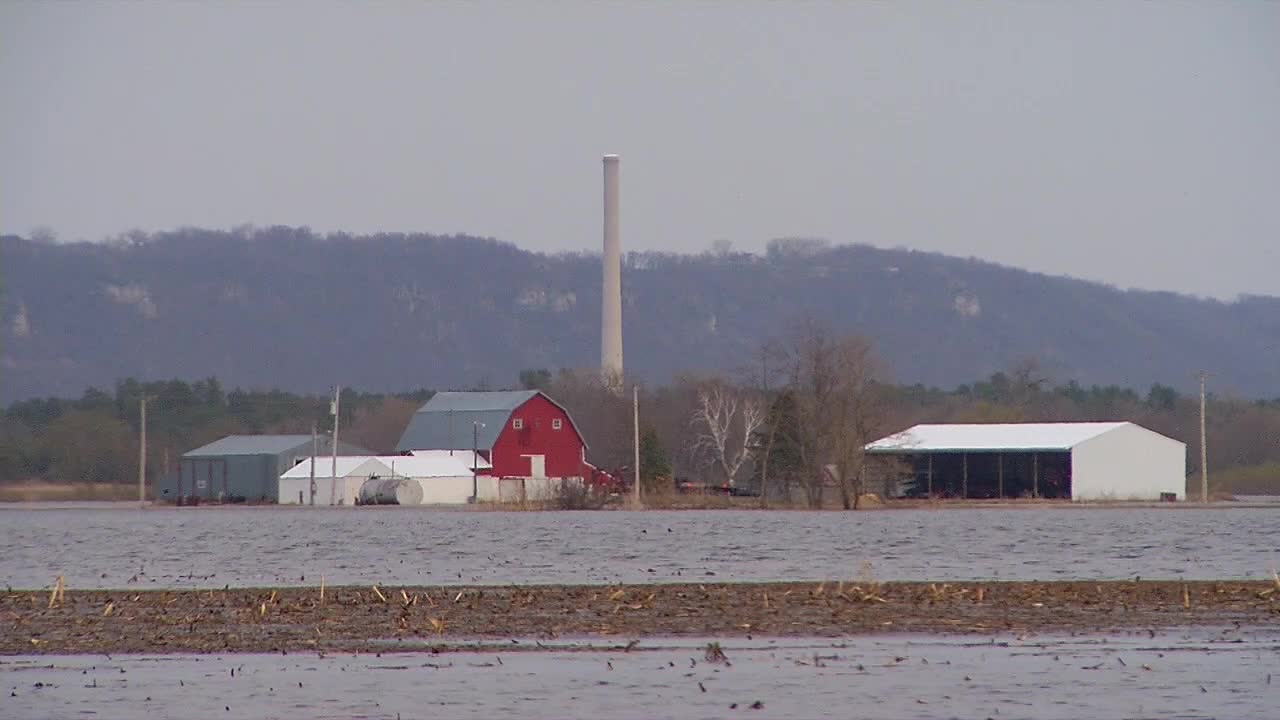Spring flooding could delay planting season for farmers by two weeks
[anvplayer video=”5174637″ station=”998122″]
County Road 24 in Wabasha can be a busy highway.
It’s also where Kristie Kropp often takes her evening walk.
But this week, she’s seen a rural landscape utterly changed.
“It’s obviously very overwhelming,” Kropp, who lives nearby, says. “It looks like it’s not a field. It looks like a permanent lake.”
Farms here are underwater.

Farm Flooding (KSTP)
Homes are marooned.
Growing fields are like wildlife habitats, and dirt roads simply disappear.
All of this on the cusp of planting season.
“I grew up on a farm, so I know that springtime and the weather are always important on farms,” Kropp says. “Really, the weather dictates what you’re going to do on your farm and get things going on time. And this kind of weather catastrophe does not allow that to happen.”
Wabasha has been impacted by flooding from the Mississippi, fed in turn by the St. Croix and Chippewa Rivers.
But this spring’s rapid snow melt, high temperatures, and rain are affecting far more than this southeastern Minnesota community.
“All of a sudden, it just warmed up, and just overland flooding, as well as river flooding,” says Noreen Thomas, with Doubting Thomas Farms in Moorhead. “We have whitecaps out in front in a field that we usually plow. My husband was actually canoeing.”
Thomas says fields in their 1200-acre farm near the Buffalo River have been under two to three feet of water.
Now, she says, the planting of organic wheat, rye, and soybeans will have to wait two weeks or longer.
“It’s kind of a short window, especially for small grains, to get in that crop, kind of compete with those weeds, and have a nice crop,” Thomas explains. “Because every week that goes by, you’re affecting yield. And it’s actually hurting your bottom line.”
She says if conditions don’t dry up quickly enough, she may have to switch crops.
The wet conditions are all too familiar to Anne Schwagerl, the Minnesota Farmers Union Vice President.
“We’re really anxiously waiting for things to dry out on our farm,” she declares. “We had standing water; we had pretty vicious rivers where there normally isn’t a river.”
Schwagerl spoke to 5 Eyewitness News from her Browns Valley farm along the South Dakota border.
She says she’s already thinking ahead about the effects of a late planting season on the commodity markets.
“I think that will impact the markets by and large when it’s this widespread,” Schwagerl notes. “You know, we had this late spring, huge heavy snows this wide across our region, then I think it does start impacting markets.”
Meanwhile, in Wabasha, Barbara Laska — a longtime resident — is among those hoping this year’s high waters will recede soon.
She worries about the farmers in her neighborhood.
“The worst flood that I can remember was in ’65,” she recalls. “It definitely has delayed their growing season, no two ways about it.”
Kropp says she, too, is waiting — and hoping for the best.
“You’re wanting to do some tillage and then be thinking about when you can plant. I don’t see that happening for a long time here,” she says. “It’s disheartening, and my heart goes out to the people who have to deal with it.”